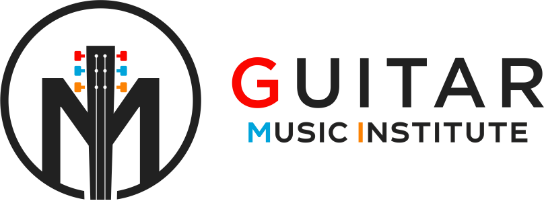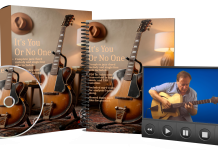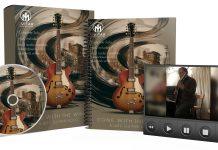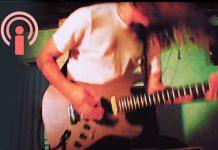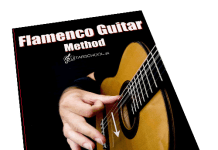This post may contain affiliate links. As an Amazon associate, Google associate as well as associate for other programs, Guitar & Music Institute may earn commissions from qualifying purchases.
FretDeck – Learning Guitar Through A Card Deck
Justin Comstock recently gave an interview on the GMI podcast about his community funded product FretDeck. The FretDeck website states, “Master The Guitar – The FretDeck helps guitarists learn and master the guitar in every single key”. In this review, we look at FretDeck and see what it has to offer guitarists.

What Is FretDeck
FretDeck is the first product from Justin Comstock a guitarists from Salt Lake City in the USA. Justin was recently interviewed for a guitar and music institute podcast and we were delighted that he has sent us a FretDeck pack for inspection and review.
The FretDeck concept is simple; information about chords, scales and keys are placed on a playing card sized deck. The information is portable and would be useful when you have a moment to spare and want to learn some guitar related information.
The Look And Feel Of FretDeck
The FretDeck cards come on medium card stock and are of good quality with a matt finish to the product supplied in a transparent plastic rectangular box. One side of the card is used for guitar related information with the other side devoted to the company logo and trademark. There are thirty six cards devoted to chords, scales and keys and four other cards which give information on how to use, copyright and scale information. Although FretDeck is probably aimed at younger players, we felt that the text on the cards was pretty small, probably around 6 point. If you are older and have problems with small text you may need to reach for those extra strong reading glasses. Thankfully there are not too many cards with text only information that needs to be looked over.
How Does FretDeck Work?
FretDeck as a learning guitar system is straightforward. Twelve keys are offered up with three cards devoted to each key. The three cards for each key offer exactly the same information respective to the key being viewed:
- Card one – A fretmap of three pentatonic scales (two major and one minor up the neck).
- Card two – Chord shapes for I, IV and V in the respective key.
- Card three – Two pentatonic scales patterns (major and relative minor).
Thoughts On The Information Provided By FretDeck
We are really behind FretDeck and we think it’s a great idea but it would be amiss of us not to share certain anomolies and concerns that came up in this review. FretDeck is marketed as a way for guitarists to “learn and master the guitar in every single key” and should be judged on that basis and that basis alone.
- The FretDeck card system makes a lot of assumptions about the viewers knowledge, specifically theoretical knowledge. First up are the keys offered which number twelve. The keys go through the cycle of fourths/fifths and only state one enharmonic option (either flat or sharp). If a user does not know that the chord forms played in the key of D sharp are exactly the same forms as used in E flat then what happens then? Enharmonic considerations have been left out, probably to keep the deck size down but it will leave the uninformed user with a gap in their understanding of what chords are used in specific keys. A simple C sharp equals D flat on the card would have helped here and still kept card numbers and resulting costs down.
- Regarding enharmonic spelling there is an anomoly regarding the scale information card and the actual way the keys are presented. On the scale information card the key of D flat major is shown, however, in the FretDeck guitar cards the key shown is C sharp major. If you don’t know they are sonically the same thing, you’re in the dark.
- With regards to the scale information card we think that it may be wise to actually not show this card at all for the following reason. In the scale information card the scales shown are the modal (Ionian) mode. When we look at the fretboard scale card, however, it’s pentatonic scale forms that are shown. The notes from the pentatonic are on these cards (from the major root), but no reference is made to the fact that these cards show pentatonic and not modal major scales. The cards show five note pentatonic scales, the scale information card shows eight note modal scales. By not giving any explanation as to why one card shows scales with eight notes, yet the card which shows the scales only have five notes could have people seriously scratching their heads.
- The scale cards for each key (not the fretmap example) are shown with the neck to the horizontal. Purely subjective, but we feel it would have been better if the patterns had been shown on the vertical. Also, the way the fret numbering was shown was a tad confusing and often wrong. For example, the key of F major has the major pentatonic scale shown at fret number one. This scale actually has open string notes if played in this position or if played as shown on the card, you’d be playing F sharp pentatonic major. All major scale pattern nomenclature suffered from this way of describing the fretboard neck.
- Scale form boxes all looked like the nut was on the left extremity of the fretbox regardless of position.
- There were two scale patterns shown for each key, however, on the fretmap there were three scale patterns shown (which is small in print and a little confusing to understand). We have no problem in showing extra scales but why? Most people work to the standardised five pentatonic scale caged patterns yet only two were shown on each scale card within FretDeck. To add a third scale pattern into the scale fretmap then begs the question “why not show all five regular pentatonic patterns”? Obviously card size is an issue here but perhaps more cards were needed for each key?
- Use of language. When describing theoretical concepts we feel it’s really important to get the language correct. For example, in the key cards explanation the card states “…see the 4 main chords that you will be able to play.” In our view this is a misleading statement. This statement suggests that some chords are more important than others. The harmonic importance of a chord depends on the function that the chord is carrying out within a song. It would surely be better to say that chords I – IV – V and VI are shown for each key.
- Again, the fretboard maps information states that the all the notes are shown for the key selected which is not the case.
- In fretboard maps the root note for the major scale is described as “the root notes you are playing in”, however, the root for the relative minor scale to this major scale is described as just “the relative minor notes in the key you have selected”. This is confusing language. Every major scale has a relative minor and visa-versa. The root of the relative minor scale is just that; it’s root note.
There were other issues but this covers a good percentage where things need to be looked at and developed.
Summing Up FretDeck
It’s never good to sound negative or critical when new ideas are brought forward for learning on the guitar. Justin Comstock is a great guy and guitarist and he has worked really hard and been supported by many people to bring out FretDeck which is a huge achievement and we totally applaud this idea and effort.
The basic idea is great! Having a deck of playing cards in front of you that you can memorise when you don’t have a guitar will undoubtedly help many people learn chords scales and guitars. The problem is not in the idea, the materials used or the design but some of the information and the way it’s delivered.
For guitarists who just want to learn a few chords and scales then for the most part FretDeck will be fine. For anyone serious about the guitar, they will have to be careful as some of the information is misleading and some of the information is presented wrong. Justin was talking about further FretDecks and we hope he does, however, first up is surely to rectify the issues with this current product.
If anything, perhaps FretDeck is just too ambitious in what it wants to offer. A deck of cards with chords and some open string scales and arpeggios would probably have hit the mark just as well as the one created. We look forward to seeing the next FretDeck in the future.
Finally, the price of FretDeck is pretty steep at $30 but if you are just starting out, it may be the best $30 you spend for some time.
More FretDeck Video
An overview of FretDeck by the creator Justin Comstock.
You can find out more about FretDeck and purchasing it by clicking FretDeck.
The FretDeck pitch on the Kickstarter website.
Other product reviews can be found by clicking GMI Guitar Gear Reviews.
This post may contain affiliate links. As an Amazon associate, Google associate as well as associate for other programs, Guitar & Music Institute may earn commissions from qualifying purchases.
